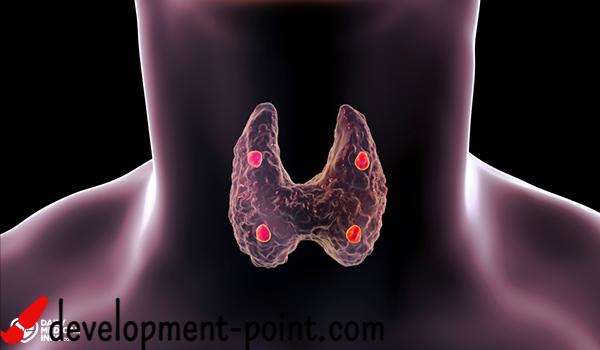Benefits of Quraish cheese: But beware of the damage
Cottage cheese is one of the most favorite types of cheese among many athletes, especially bodybuilders, runners, and people who want to lose weight. So what are the benefits of Quraish cheese? And what are its harms?
Quraish cheese
Cottage cheese is a light, fresh cheese made from pasteurized cow’s milk curds, which may be whole milk, skim milk, or reduced fat milk. It is also available in different sizes of curd. What distinguishes it is that it is a rich source of protein, calcium, vitamin A, and B vitamins. It is also relatively low in fat.
The nutritional value of cottage cheese
Each 226 gm of low-fat cottage cheese contains the following:
- Carbohydrates: 6.2 g
- Fat: 2.3 g
- Protein: 28 g
- Calcium: contains 11% of the required daily value
- Selenium: contains 37% of the required daily value
- Sodium: contains 30% of the required value
- Folate: contains 7% of the required value
Quraish cheese also contains adequate amounts of zinc, copper, vitamin B6, and choline.
Benefits of cottage cheese
Cottage cheese has many health benefits, so many people may eat cottage cheese with the addition of black pepper, or by adding cheese to salads. Among the benefits of cottage cheese:
1. Promote bone health
Cottage cheese is a rich source of calcium, a mineral that plays a major role in maintaining healthy bones and teeth. It also helps prevent the risk of osteoporosis, regulate blood pressure levels, and prevent the risk of some types of cancer such as prostate cancer. So you can get about 8% of the required daily value of calcium when eating cottage cheese.
2. A good source of energy
A study conducted in 2005 concluded that adding cottage cheese to the diet of children helped eliminate lethargy and increased their energy levels.
3. Regulating blood sugar levels
One of the benefits of cottage cheese is that it helps maintain blood sugar levels, as it contains magnesium, which works to check sudden mutations, maintain the health of the immune system, and the health of the heart and blood vessels.
4. Promote heart health
Cottage cheese contains potassium, which plays an essential role in maintaining fluid balance in the body. It also helps in getting rid of the effects of excess salt, thus maintaining heart health. But you must make sure that the cheese does not contain a high percentage of salt, because excess sodium may harm heart health.
5. Improve digestion
One of the benefits of cottage cheese is that it contains good amounts of phosphorous, which aids digestion. Magnesium also works to prevent constipation, as it can have a laxative effect, drawing water into the stool, making the stool softer, and thus easier to pass through the walls of the intestine.
Benefits of cottage cheese diet
Some studies have indicated that the diet contains cottage cheese, along with more vegetables, fruits, whole grains, and vegetable oils, may help to lose weight, especially when it is eaten with exercise.
Another study also found that eating overweight women to higher amounts of protein and dairy products such as cottage cheese, especially in the pre-menopausal period, helped to lose fat.
In addition to the fact that cottage cheese contains a high percentage of protein, it may help suppress appetite for a long period of time. Linoleic acid also increases the fat burning process in the body, but make sure to eat raw cottage cheese in order to ensure more effective results.
Cottage cheese diet
One of the most important benefits of the cottage cheese diet is rapid weight loss, as any diet that contains few calories usually helps to lose weight, but mostly you may lose water weight, not fat. Among its benefits are:
- Cottage cheese is inexpensive and easy to make at home.
- Protein-rich foods digest slowly, which helps you feel full for longer, while reducing the possibility of overeating.
Calories in cottage cheese
Each 226 gm of low-fat cottage cheese contains 163 calories. It is worth noting that protein represents more than 70% of the calories in cottage cheese.
How to make cottage cheese
Cottage cheese can be easily made at home by following these steps:
- Heat the milk in a non-stick pot over a medium heat until it almost boils.
- An acidic substance such as vinegar or lemon juice is added to warm milk, stirred slightly, and then removed from the heat.
- When the acidity of the milk increases, the casein protein begins to separate from the liquid part of the milk.
- After the curd hardens, it is lifted with a perforated ladle to drain the milk.
- The cheese is washed in order to get rid of the acidity, and dried in order to get rid of the liquids.
- Put in a bowl and then put in the fridge until it holds together.
To add more flavor to the cottage cheese, some ingredients such as herbs, spices, salt, and cream can be added.
For more information, read also: How to make cottage cheese salad
Cottage cheese damage
Although eating cottage cheese is safe and healthy. But an excess of it may be harmful to health. This is because it contains a high percentage of sodium (about 696 mg per cup), which may lead to high blood pressure in some people, and thus increase the risk of heart disease.
Excess calcium can also lead to negative effects. One study found that consuming large amounts of calcium or dairy may increase the risk of prostate cancer.
Although the amount of calcium the body needs depends on age and gender. However, the recommended upper limit is 2,500 mg of calcium per day, for adults from 19 to 50 years old.
This is in addition to the fact that cottage cheese is free of fiber. A low-fiber diet is often associated with digestive problems such as constipation, hemorrhoids, and diverticulosis.
The recommended daily value of fiber is approximately 25 gm for women between the ages of 19 to 50 years, and approximately 38 gm for men between the ages of 19 to 50 years. As for people over the age of 50, they need a little less than that.

